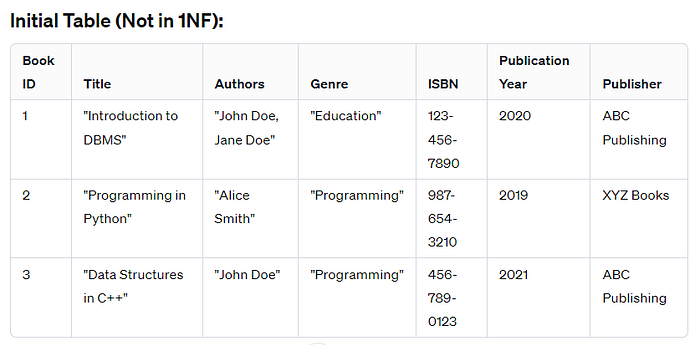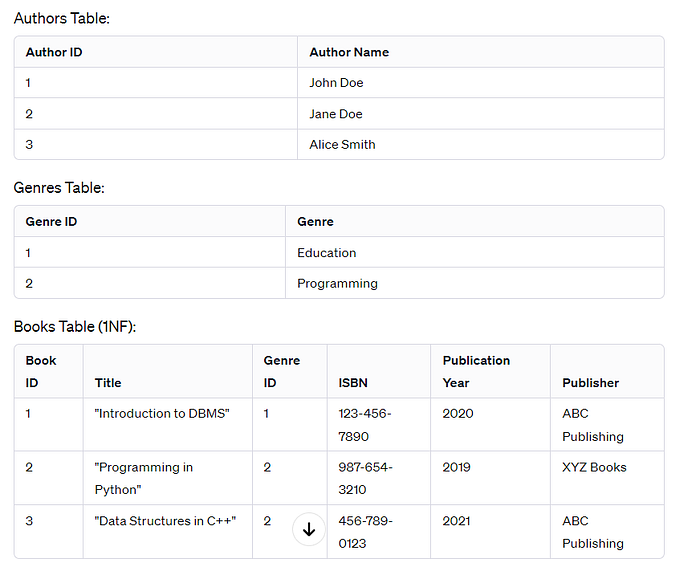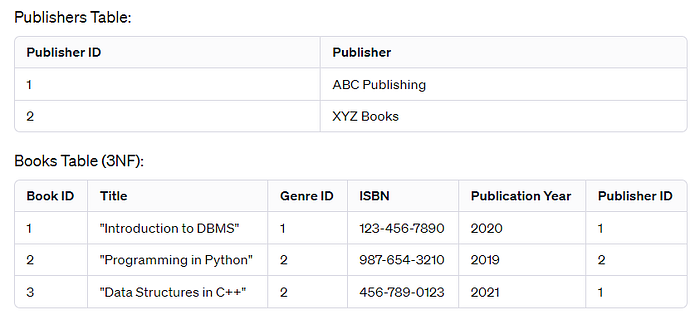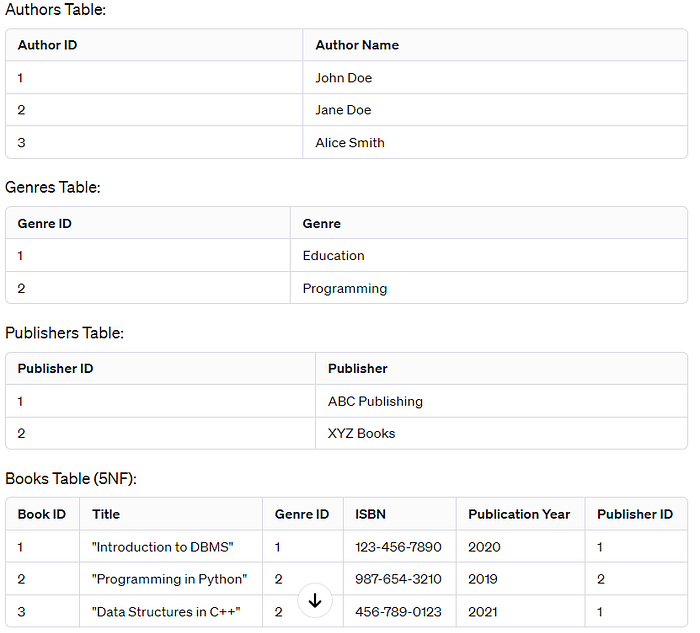Normalization is a process in database design that helps organize data in a relational database to reduce redundancy and improve data integrity. The normalization process typically involves decomposing tables into smaller, more focused tables and establishing relationships between them. The normalization forms are categorized from the first normal form (1NF) to the fifth normal form (5NF), each addressing specific issues related to data organization.
Why is normalization important?
Normalization is important because it allows you to make your database design more maintainable and easier to optimize. Also, deduplicating data is a great way to prevent stale data from being fetched and used by accident.

Let's go through a real example of normalizing data from 1NF to 5NF. Consider a hypothetical database for a library system with the following initial table:

Issues:
- Authors field contains multiple authors in a single string.
- Genre is not atomic; it contains multiple values.
- ISBN is unique but not atomic.
- Data redundancy in Publisher.
1NF (First Normal Form):
To achieve 1NF, we need to ensure that each cell contains atomic (indivisible) values. We can create a separate table for authors and another for genres.

2NF (Second Normal Form):
In 2NF, we address partial dependencies. The Books table is already in 2NF since there are no partial dependencies.
3NF (Third Normal Form):
In 3NF, we remove transitive dependencies. Here, we'll create separate tables for Publisher and Authors.

BCNF (Boyce-Codd Normal Form):
If there are any non-trivial functional dependencies in the table, we decompose it further to achieve BCNF. However, in this case, the table is already in BCNF, as there are no non-trivial functional dependencies.
4NF (Fourth Normal Form):
In 4NF, we address multi-valued dependencies. In this case, there are no multi-valued dependencies.
5NF (Fifth Normal Form):
In 5NF, we address join dependencies. If there are any join dependencies present, we further decompose the table. In this example, let's assume there are no join dependencies.
The final normalized tables are in 5NF and are as follows:

This example demonstrates the step-by-step process of normalizing a database from 1NF to 5NF, addressing different types of dependencies at each stage. Keep in mind that the normalization process depends on the specific requirements of the application and the nature of the data.
